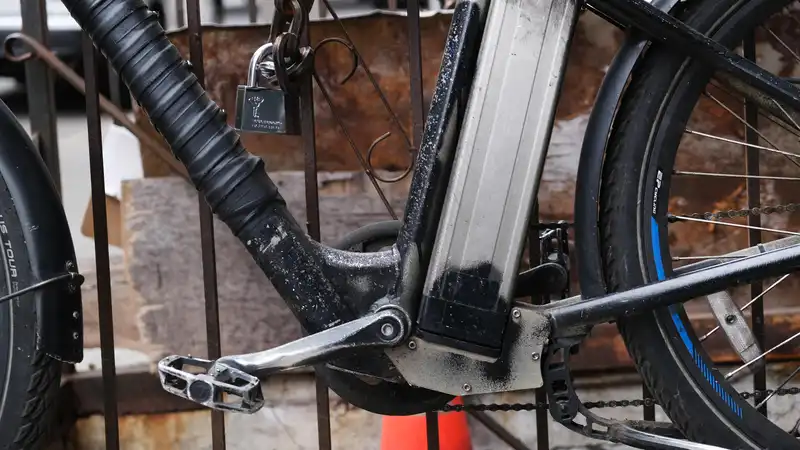A staple in nearly every major city and used primarily by food delivery companies: homemade e-bikes, often modified at home without professional supervision, are rapidly becoming a problem for fire departments. Today, the BBC reported a call from the National Fire Chiefs' Council following a series of house fires caused by ignited lithium-ion batteries.
The most recent high-profile fire occurred in Bristol, England, at the end of September, when Jabar Olyake, 30, fell from the 16th floor of a tower apartment building while trying to escape the flames and narrowly died. According to an investigation published on Gov.uk in August, this was one of 235 reported in the past two years A total of 11 people were reported to have died in e-bike fires in 2023.
The National Fire Chiefs' Council has stated that it wants “tighter product safety rules” regarding e-bike conversion kits and tighter regulations regarding the sale of the kits. Bristol City Council, in response to the fire, stated:
“There is mounting evidence that raises concerns about the risks posed by lithium-ion batteries. If any are found not safely stored or charged in communal areas, we will consider removing them from public housing.”
This latest tragedy is likely the final reason why online auction giant eBay has banned private sales of eBikes on its site, citing fire hazards. However, sales are still allowed to reputable companies.
Homemade eBikes are often much cheaper than stand-alone eBikes and are built with inexpensive motors and batteries, just like cheaper bikes. According to the charity Electrical Safety First, the main cause of fires appears to be a mismatch between charger and battery. Guiseppe Capanna, a product safety engineer for the organization, describes the problem of missing or mismatched components as follows.
“Even if the motor and controller are included, the two most important components, the battery and the charger, are not always included. It is therefore up to the consumer to determine which product is needed to ensure safety, and in many cases, consumers get it wrong. There is a high risk that the charger will not be compatible with the battery. Batteries can become overcharged, which is one of the causes of thermal runaway.
The problem does not seem to be that people are unaware of the dangers, but that cycle couriers accept the dangers as an unfortunate necessity. As one anonymous messenger said:
“If you work full time as a rider, you need an e-bike. e-bikes can ignite. I remove the battery from the bike and charge it outside the house, usually in the garage. It is very dangerous. I am careful because it could catch fire in my house and hurt people.”
No, there are calls for third-party certification to put e-bikes in the same category as fireworks, but if you own or are considering buying an e-bike from a reputable manufacturer, you need not worry. We have a list of the best electric bikes on the market, as well as a list of the best electric bike conversion kits.
Sarah McMonagle of Cycling UK reassures the public: “Like traditional pedal cycles, e-cycles improve physical and mental health, improve air quality, and reduce your carbon footprint. They are a great option for cyclists in hilly areas, those who have mobility issues, carry children or groceries, or simply don't want to break a sweat on their commute. E-cycles are very safe if purchased from a reputable manufacturer.
In terms of education, there is much work to be done. To address this issue, at least in the UK, the Electric Bike Alliance has launched a UK cross-industry e-bike positive campaign to spread awareness of the health benefits of electric bikes as well as potential safety issues in the market.
.

Comments